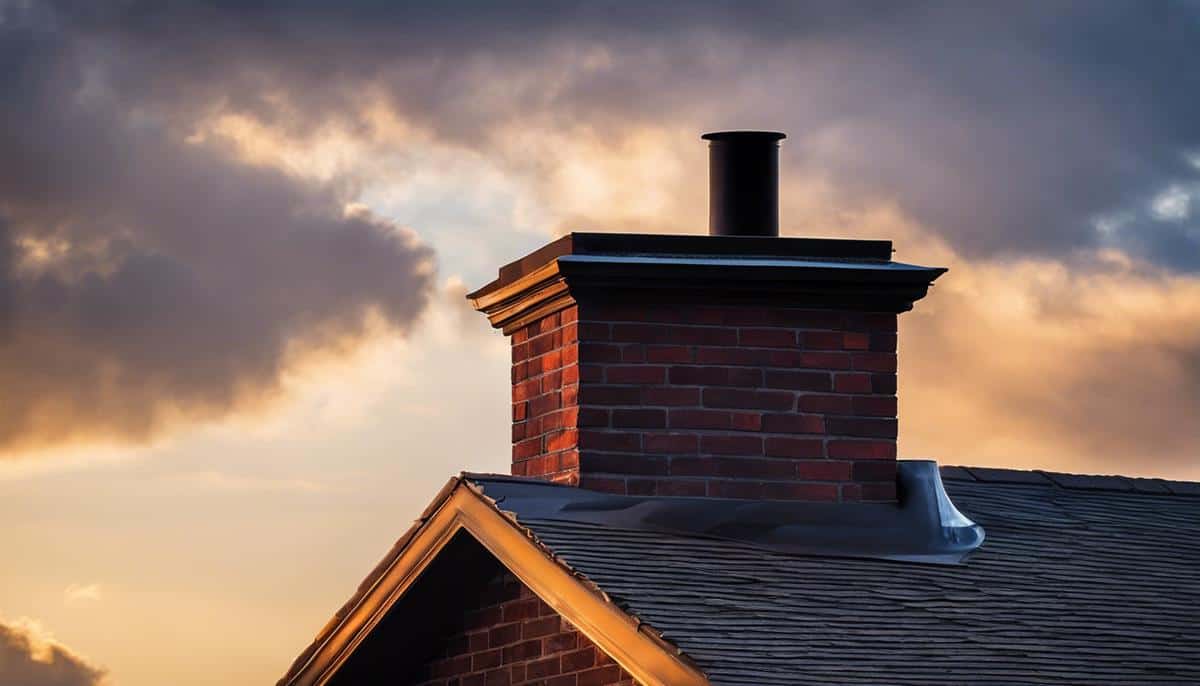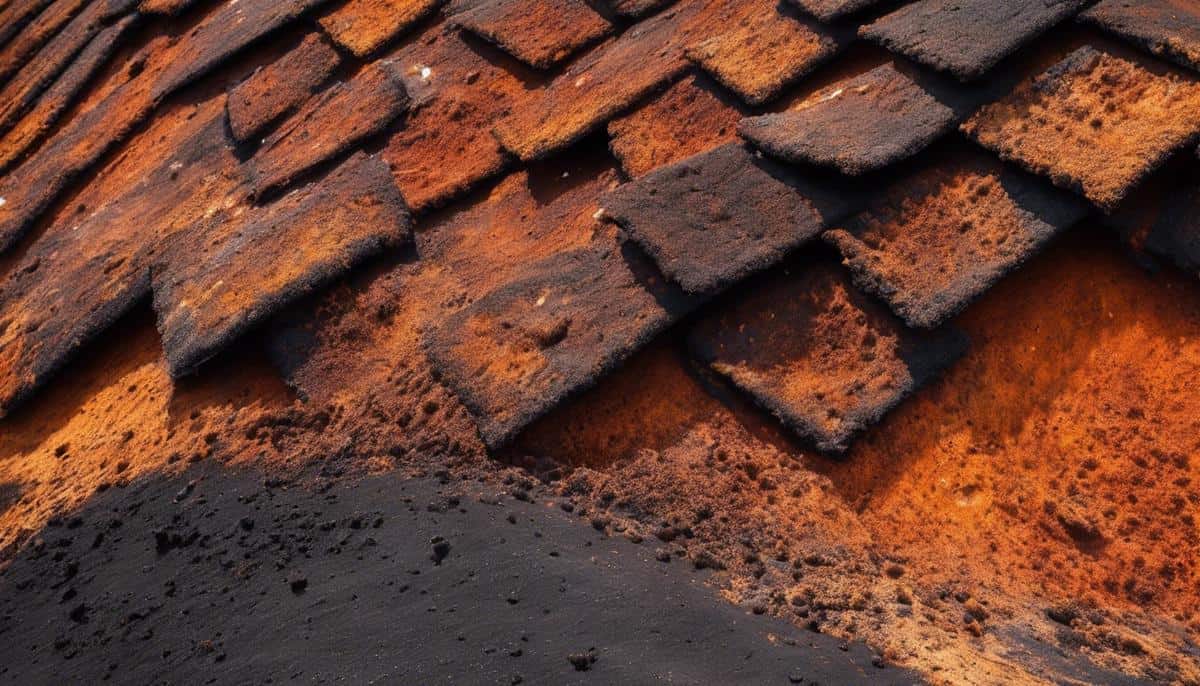Maintaining a clean and functional chimney is a key aspect of home safety that is often overlooked. A chimney that is regularly used to vent smoke from a fireplace or heating appliance is prone to creosote buildup, which can become a hazard if not addressed. Creosote, a byproduct of wood combustion, progresses through various stages of buildup, each requiring a different approach to cleaning. By understanding these stages—from the initial flaky soot to a thick, tar-like glazing—you’ll be better prepared to assess the health of your chimney. Additionally, knowing when to clean your chimney, which is typically recommended on an annual basis, is vital for preventing dangerous chimney fires and ensuring your home’s heating system functions efficiently. This awareness, coupled with the expertise of a professional chimney sweep, is the cornerstone of responsible chimney maintenance.
Recognizing Chimney Creosote Buildup
Spotting the Sneaky Culprit: Hazardous Creosote Buildup in Your Chimney
Hey fellow family-focused friends! Does the soothing crackle of a fireplace warm your heart as much as it does mine? There’s something about a roaring fire that just makes a house feel like a home, right? But here’s the thing—keeping our cozy corners safe is just as important as those snuggly vibes. One hidden hazard that can dampen our warm feelings is creosote accumulation in our chimney. Let’s dive into how we can spot this uninvited guest before it crashes our family gatherings!
Know Your Enemy: What’s Creosote Anyway?
Creosote isn’t just a fancy word; it’s a real concern for us homey types. When we burn wood, creosote forms and sticks to the insides of our chimneys. This buildup isn’t just untidy; it’s downright dangerous. It can lead to chimney fires that threaten our loved ones and our precious homes. So, let’s get down to brass tacks and talk about how to identify it, shall we?
First Clue: A Glance Speaks Volumes
Every so often, put on your detective hat and shine a flashlight up your chimney. What you’re looking for is a shiny, tar-like glazing. If you see a light, puffy, or flaky substance, that’s creosote in its early stages. If it looks gummy and shiny, that’s a sign it’s getting worse. Both are reasons to call in the professionals, stat!
Sniff Test: The Nose Knows
Sometimes, our noses can be the best detectors. If you get a whiff of an odd or smoky smell, especially after a fire, it might be a telltale sign of creosote. Funky smells are a red flag and shouldn’t be ignored. It’s better to be safe than sorry, so consider it a nudge to get your chimney checked.
Performance Check: Fires That Fizzle
Notice your fires aren’t doing the lively dance they used to? When fires burn sluggishly or you’re finding it tough to get the wood to ignite, creosote could be crashing the party. This unwanted buildup can restrict airflow, and fires need to breathe just as much as we do.
Touchdown: The Tactile Approach
For the hands-on bunch, you can (very carefully!) use a fireplace poker to scratch the surface inside your chimney liner. If the creosote buildup is 1/8 of an inch thick or more, it’s time for a thorough cleaning. Remember, always prioritize safety when doing this check.
Bringing in the Big Guns: Professional Inspection
Honestly, there’s no substitute for a professional chimney inspection. They’ve got the tools and the know-how to spot creosote that we might miss. Aim for an annual inspection to keep the home fires burning safely.
Here’s the take-home message, dear friends: keeping a vigilant eye on creosote accumulation is a non-negotiable for a happy, healthy, hearth-centered home. So, let’s stay on top of it for the sake of our peace of mind and the safety of those cuddle-worthy corners we all cherish. When it comes to our families, let’s play it safe and keep those fires perfectly pleasant.

Understanding Chimney Cleaning Frequency
Clear as a Bell: Deciphering Chimney Cleanliness Frequency
When cozying up next to a crackling fireplace with loved ones, the last thing anyone wants is the sneaking suspicion that it might be time for a chimney sweep. While the surefire signs of creosote buildup are well-covered territory, figuring out how often to transform a sooty flue into a clear channel for warmth and stories can depend on a few crucial factors.
First up, let’s talk usage. Like any trodden path, the amount of traffic matters. A chimney connected to a fireplace that’s the mainstage for nightly family gatherings will collect buildup more quickly than one that’s reserved for special occasions. Frequent burning means more byproducts like soot and creosote, tipping the scales towards more regular cleaning.
The type of fuel torched is also key. Ever heard the saying ‘burn it clean?’ Well, there’s truth behind those words. Hardwoods like oak or maple, which are well-seasoned, burn hotter and cleaner, leaving less residue. On the flip side, resin-rich softwoods or damp logs are a shortcut to a dirtier chimney, thanks to their proclivity for producing more smoke and creosote.
Now, let’s chat seasons. Winter might be the lead actor, but it’s those cameo appearances by the fireplace during the other seasons that add up. An annual clean after the cold has retreated is standard advice, ensuring it’s pristine for its next big role. Nevertheless, heavy use in the colder months might necessitate a mid-season sweep to keep things in check.
Don’t overlook the design of the chimney and the stove. Older models or those with longer, more complex venting systems tend to accumulate creosote at a quicker pace. It’s like a tricky maze where soot can easily find a nook to settle down.
Pro tip: keep an eye on the color of the smoke wafting from the chimney. Dark, murky plumes serve as a flag that it’s high time for a cleaning, indicative of incomplete combustion and potential creosote deposit.
Ultimately, there’s wisdom in the adage ‘better safe than sorry.’ Many experts rally for a yearly professional inspection to catch any quirky behavior early on. Clean chimneys mean more than just safety – they’re about peace of mind, knowing that each flickering flame is cradled in a well-maintained hearth.
Sifting through these factors, one finds the roadmap to a clean sweep. It’s not just about ticking a box; it’s about nurturing the hearth that warms the heart of the home. And with that, may every family enjoy the glow of a well-kept fireplace, season through season.

Hiring a Professional Chimney Sweep
Okay, picture this: it’s a chilly evening, and the family’s gathered around the hearth. There’s laughter, steaming mugs of cocoa, and the crackling of firewood. Pure bliss, right? Now, let’s make sure that scene stays cozy and, most importantly, safe!
When the chill in the air beckons you to light up the fireplace more frequently, it’s crucial to keep in mind that every crackle and pop also means your chimney is working overtime. A well-used fireplace needs a clean chimney to avoid any unwelcome surprises.
Now, you might be wondering, “When exactly should a professional chimney sweep come into the picture?” The answer ties back to the fireplace’s best friend and biggest foe: fire. When you ignite your lovely, warm fires, you’re also cueing the silent build-up of by-products that can lead to hazards if left unchecked.
Here’s the scoop on when to call in the pros:
-
Frequency of Use: If your fireplace is the star of your living space during the colder months, treating your home to a professional chimney sweep at least once a year is a wise move. A yearly visit will keep everything in tip-top shape.
-
Type of Wood Burned: It matters what kind of fuel your fires are feasting on. Hardwoods, like oak or maple, generally combust more cleanly than softwoods, like pine. Burning wood that hasn’t been adequately dried or seasoned also leads to more rapid creosote accumulation.
-
After Burning Green or Wet Wood: If you’ve accidentally used wood that was less than ideal, it’s time to hit up a chimney sweep shortly after, as this can increase creosote build-up at a faster clip.
-
Following an Eventful Season: After seasons with heavy use or extraordinarily cold winters, scheduling a sweep to give your chimney a once-over ensures you’re good to go for the next round of family snuggle-fests.
-
Visible Issues: Should you ever spot sooty build-up or parts of your chimney looking worse for wear, it’s not just an aesthetic concern. That’s a red flag a professional needs to see pronto.
Remember, it’s not just about cleanliness. A qualified chimney sweep doesn’t just bring brushes and leave soot in their wake; they’re also your line of defense against chimney fires and carbon monoxide leaks.
So, here’s the key takeaway: keep those moments by the fire special and secure by staying on top of your chimney’s health. Trust a professional to preserve that family haven, ensuring every flicker of the flame is a safe one. Before you know it, they’ll have your chimney clean as a whistle, and all ready for your family’s next fireside gathering!

Understanding the nuances of chimney care safeguards your home and family from potential hazards. Throughout the year, your chimney works tirelessly, but without proper maintenance, it can become a silent threat. A professional chimney sweep has the tools and knowledge required to thoroughly clean and inspect your chimney, ensuring it continues to operate safely. With regular cleanings and expert assessments, you can enjoy the warmth and comfort of your fireplace or heating appliance with peace of mind. Remember, vigilant home maintenance includes taking care of the unseen, and when it comes to your chimney, a proactive approach is always the best defense against unexpected issues.
